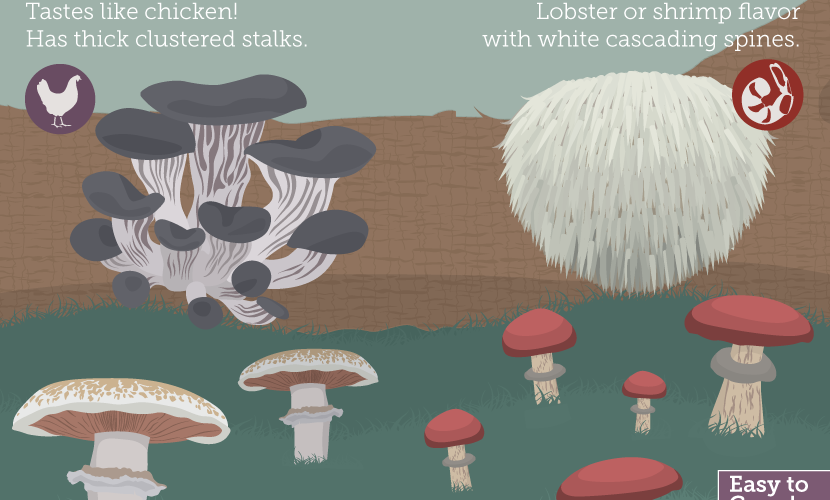Although home gardeners have grown mushrooms for over a thousand years in China, they are a fairly recent crop for the gardener here in the United States. Harvesting a crop of mushrooms can provide some of the best tasting, freshest mushrooms possible. The health benefits of several easy to grow species are being studied, and the culinary benefits are widely known. There are over 14,000 species of known mushroom of which about 250 are edible. Some are extremely difficult, if not impossible, to cultivate but several species are quite simple to grow at home. Some of the easiest to grow are shiitake, oysters, wine caps and portobellos.
The Basics; Substrate, Spawn and Mushroom Growing Conditions
Unlike green plants that produce their food from sunlight and carbon dioxide using the process of photosynthesis, mushrooms are fungi and rely on decaying plant material for their food.
The substrate, or growing medium, provides this. Substrates vary depending on the type of mushroom grown. It is important to know which substrate is best for the type of mushroom that will be grown. Using the wrong substrate can prevent the crop from maturing. Straw, sawdust, ground newspapers, or even coffee grounds can serve as the substrate for mushroom growth. Shiitake mushrooms prefer wood, and many growers use plugged hardwood logs with the bark still intact to grow shiitakes outside or in a greenhouse.
Hardwood sawdust that is enriched with cottonseed meal is also appropriate for shiitakes. Straw is the best substrate for oyster mushroom, but coffee grounds or sawdust can be mixed with straw. Wine caps are quite versatile and can be grown on garden soil, in a compost pile or on wood chips. The substrate is often placed into plastic bags with holes. These will be the spots where the mushrooms grow out to be harvested. Simple containers made of old milk cartons or other materials can be used for small mushroom gardens.
No matter what kind of substrate is used it must be sterile to destroy competing fungi spores that may be present in the substrate. Sterile substrates can be purchased, or can be produced by heating the growing medium to 160 degrees Fahrenheit for an hour.
Spawn is the starter, think of it like seeds for growing plants. Spawn is mushroom mycelium, the threadlike vegetative portion of the fungus that grows underground and eventually produces the fruiting body or what is known as the mushroom. Spawn is usually bought commercially prepared. It can be produced by mushroom cultivators but requires exacting conditions for success. A good guide to producing spawn can be found at eHow: Make Mushroom Spawn.
Once the sterile substrate is ready, the spawn is introduced into it by spreading it through the substrate or placing it in plugs in hardwood logs for shiitake mushrooms. After inoculation, the introduction of the spawn into the substrate, the temperature needs to be maintained at 70 degrees Fahrenheit for the mycelium to spread throughout the growing medium. Each species of mushroom has its own growing requirements including temperature. Be sure to follow the exact directions for the species that is being grown. After the mycelium has spread through the substrate, the temperature will be lowered to the required temperature for the specific mushroom. This will generally be in the 50 to 65 degree range.
Moisture is essential and must be maintained throughout the process. If all the conditions are met, within a few weeks mushrooms will be ready to harvest. Depending on the species, further harvests can be made over a period of several months.
Mushroom Kits
An easy way to experience growing mushrooms is to purchase a prepared kit. These come with sterile substrate that is inoculated with spawn. All the grower needs to do is meet the conditions for moisture and temperature. Kits for many kinds of mushrooms are available online. This can be an easy way to introduce a gardener to the satisfaction of producing home grown mushrooms.



